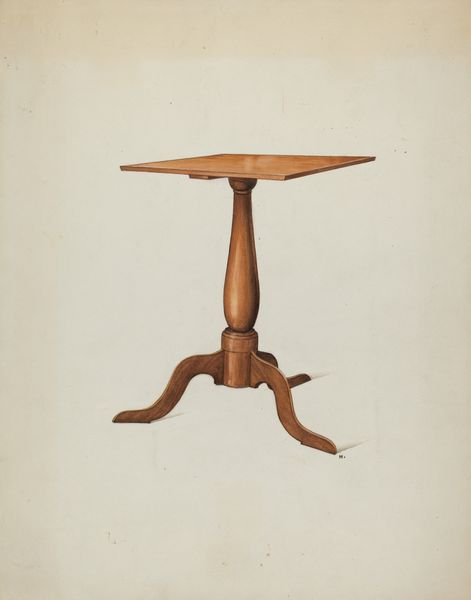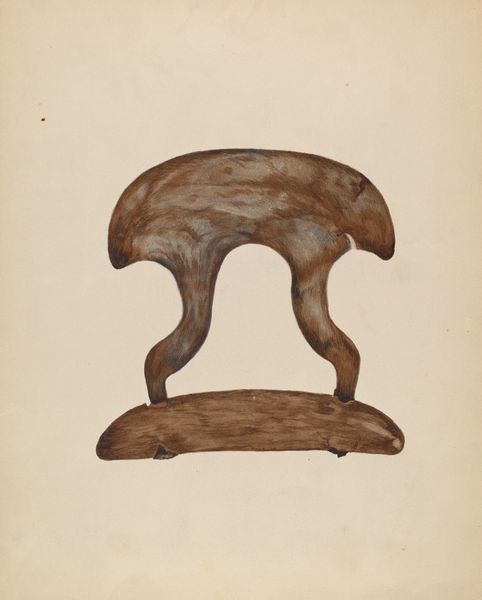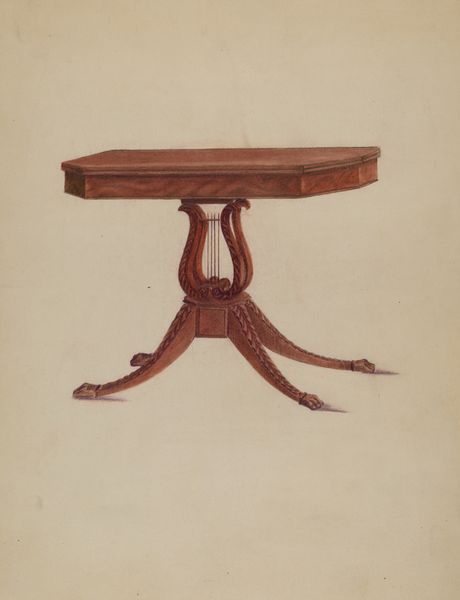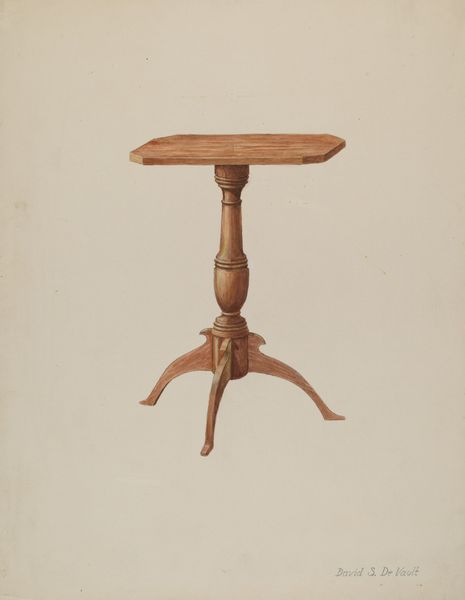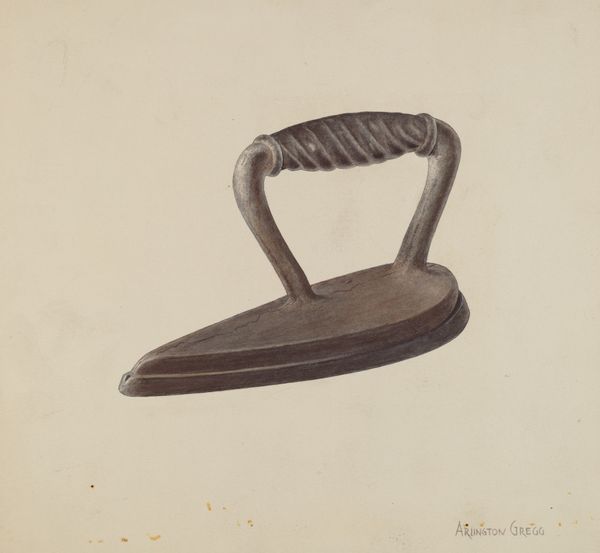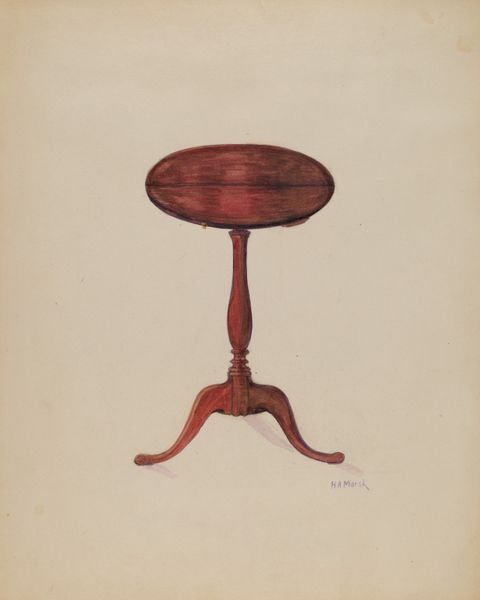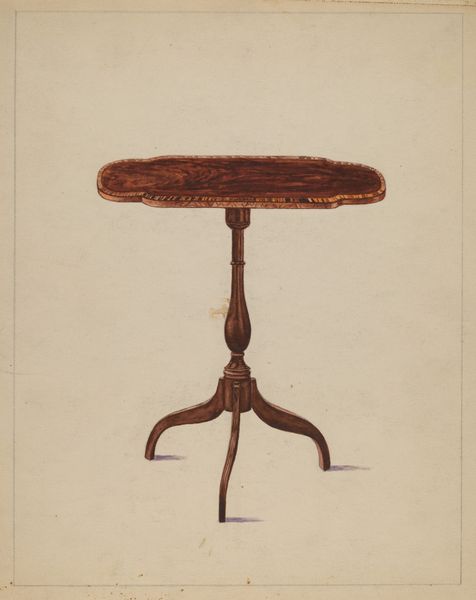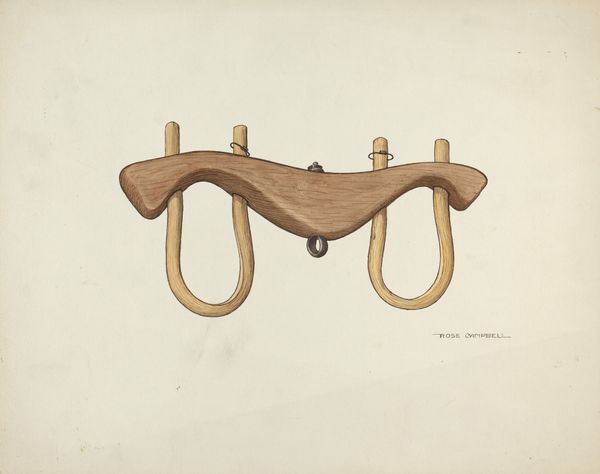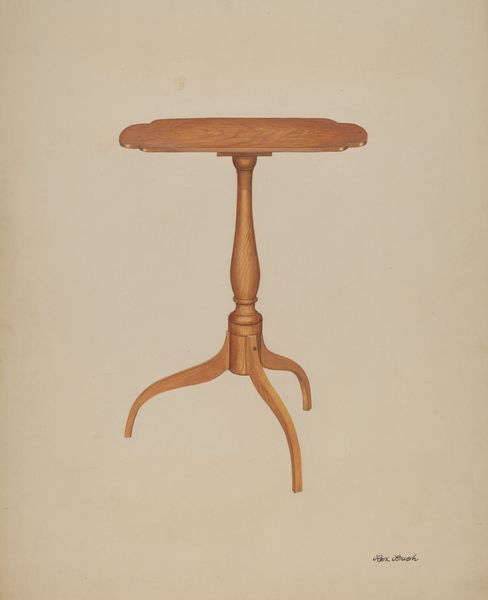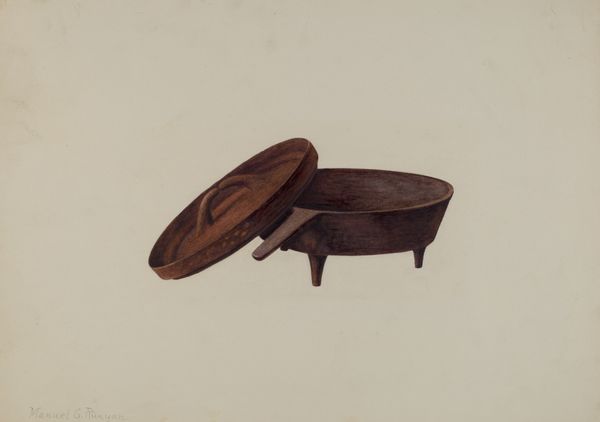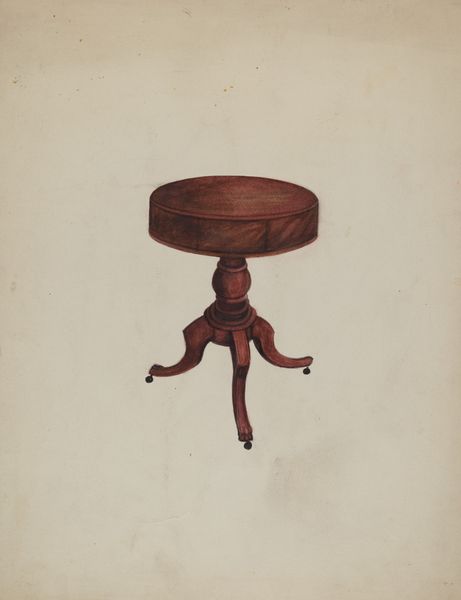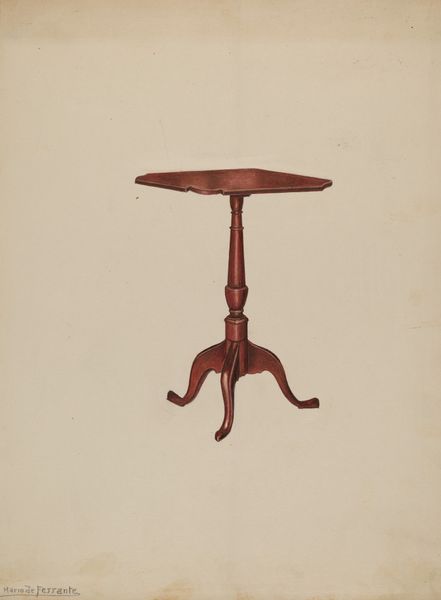
drawing, pencil
#
drawing
#
charcoal drawing
#
pencil drawing
#
pencil
#
watercolour illustration
#
realism
Dimensions: overall: 31.3 x 24.8 cm (12 5/16 x 9 3/4 in.)
Copyright: National Gallery of Art: CC0 1.0
Curator: Looking at this artwork, what strikes you immediately? Editor: It has a stark simplicity to it. Utilitarian and humble, a direct representation of everyday life, rendered in a seemingly plain style. Curator: Here we have “Chopping Knife” by Nicholas Amantea, likely created around 1941. It's primarily a drawing in pencil and perhaps charcoal with hints of watercolor illustration. Editor: The medium certainly highlights the work-worn character of the object itself. The artist's choice speaks volumes about honoring the history of manual labour that created and used tools like this. The visible imperfections—the rust, the dullness of the blade—underscore this reality. Curator: It’s interesting how such a functional item, clearly well-used, can still exude a sort of stoic presence. One almost senses a cultural memory embedded within the drawing, linking us to past generations and their essential tools. The knife’s symmetry evokes an order underlying domestic practices, though this is somewhat contrasted by its rust. Editor: The symmetry appeals to my view, drawing attention to function over flair. What I want to know is: who made the knife and used the tool, where, and for what purpose? Was Amantea consciously highlighting a tension between utility and craft? Curator: Perhaps Amantea was indeed making such observations, presenting a meditation on labor. It brings a deep question to mind. Can beauty be found in things that might be associated with the harsh realities of life? It really depends on who you ask and the historical moments that have touched them. Editor: Well, for me, the image provokes many thoughts on production and the value we assign to mundane objects, particularly given that it was made in 1941. Its existence challenges preconceived ideas about what deserves artistic attention, what deserves recognition, and how closely "high" art is to ordinary lives and experiences. Curator: Indeed. By drawing our attention to such details, we can more fully see the significance in this everyday instrument. It serves as a testament of daily routines that would have otherwise been unseen. Editor: Right. So what seemed at first like a humble illustration actually unearths many different insights about labour, domesticity and representation.
Comments
No comments
Be the first to comment and join the conversation on the ultimate creative platform.


